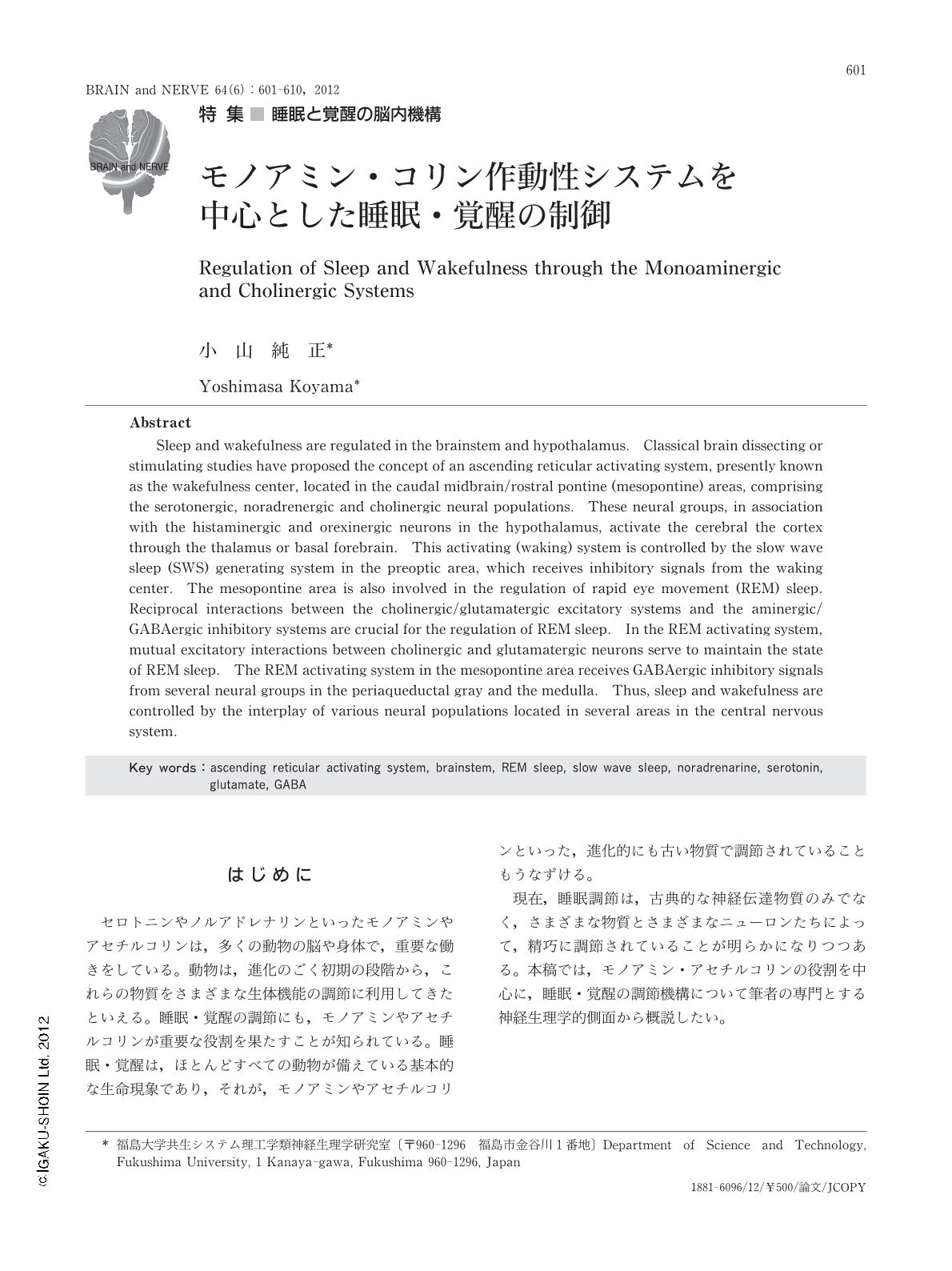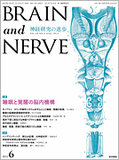Japanese
English
- 有料閲覧
- Abstract 文献概要
- 1ページ目 Look Inside
- 参考文献 Reference
はじめに
セロトニンやノルアドレナリンといったモノアミンやアセチルコリンは,多くの動物の脳や身体で,重要な働きをしている。動物は,進化のごく初期の段階から,これらの物質をさまざまな生体機能の調節に利用してきたといえる。睡眠・覚醒の調節にも,モノアミンやアセチルコリンが重要な役割を果たすことが知られている。睡眠・覚醒は,ほとんどすべての動物が備えている基本的な生命現象であり,それが,モノアミンやアセチルコリンといった,進化的にも古い物質で調節されていることもうなずける。
現在,睡眠調節は,古典的な神経伝達物質のみでなく,さまざまな物質とさまざまなニューロンたちによって,精巧に調節されていることが明らかになりつつある。本稿では,モノアミン・アセチルコリンの役割を中心に,睡眠・覚醒の調節機構について筆者の専門とする神経生理学的側面から概説したい。
Abstract
Sleep and wakefulness are regulated in the brainstem and hypothalamus. Classical brain dissecting or stimulating studies have proposed the concept of an ascending reticular activating system,presently known as the wakefulness center,located in the caudal midbrain/rostral pontine (mesopontine) areas,comprising the serotonergic,noradrenergic and cholinergic neural populations. These neural groups,in association with the histaminergic and orexinergic neurons in the hypothalamus,activate the cerebral the cortex through the thalamus or basal forebrain. This activating (waking) system is controlled by the slow wave sleep (SWS) generating system in the preoptic area,which receives inhibitory signals from the waking center. The mesopontine area is also involved in the regulation of rapid eye movement (REM) sleep. Reciprocal interactions between the cholinergic/glutamatergic excitatory systems and the aminergic/GABAergic inhibitory systems are crucial for the regulation of REM sleep. In the REM activating system,mutual excitatory interactions between cholinergic and glutamatergic neurons serve to maintain the state of REM sleep. The REM activating system in the mesopontine area receives GABAergic inhibitory signals from several neural groups in the periaqueductal gray and the medulla. Thus,sleep and wakefulness are controlled by the interplay of various neural populations located in several areas in the central nervous system.

Copyright © 2012, Igaku-Shoin Ltd. All rights reserved.


